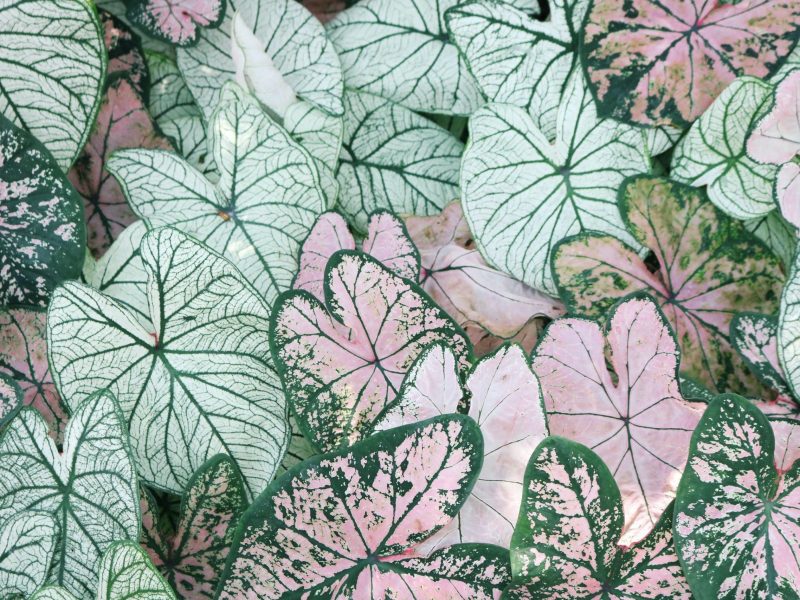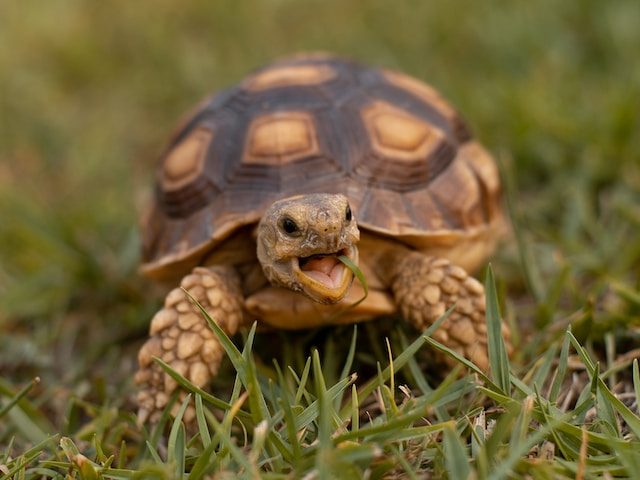
Loved for their colourful heart-shaped leaves, Caladium plants are actually a bit of a pain to take care of. They are sensitive to nearly every environmental factor which means they can develop issues, such as brown leaves if even the slightest thing is off. Below we will cover each of the main causes of brown leaves on Caladium plants so you can diagnose the issue, treat it and prevent it from harming your plant anymore.
Overwatering is a common cause of brown leaves in Caladium Plants
Overwatering is probably the most damaging of houseplant issues as it can be harder to revive your plant once the issue has taken hold and caused brown leaves. Caladiums don’t like sitting in waterlogged soil at all, they prefer their potting mix to just be lightly moist. Too much water will cause damage to the root system and mean your plant will often develop brown leaves as well as droop down and turn soft.
To figure out if overwatering is the reason your Caladium is turning brown, check the moisture levels in the soil immediately. Overwatering is a serious concern but you have the best chance at solving the issue if it is caught early. So don’t waste any time after spotting the brown leaves.
If the potting mix is waterlogged and the roots have begun to turn soft and black in colour, then this means too much water is most probably the cause of the brown leaves on your Caladium. To stop the issue progressing any further, replace the soil with fresh dry mix. Top tip: never reuse soil from another plant as this can spread diseases and pests without you noticing. You also want to trim away any roots that have started to rot as these won’t be serving your plant anymore.
Due to the damage caused to the root system, your Caladium may take a little while to fully recover and start to grow new healthy leaves. But be patient and with the right care and a bit of extra TLC you should start to see your Caladium starting to grow new healthy leaves soon.
It could also be drainage problems
Sometimes it may not be how often you water your Caladium the is resulting in brown leaves, but actually the poor drainage of the soil and pot. You want to make sure that any excess water is able to flow out of the pot and away from the roots. This will help to prevent them rotting and brown leaves developing on your Caladium.
Luckily, there are a few really easy ways to increase drainage. Firstly, mixing a small amount of perlite into the potting mix will allow for not only better drainage, but better aeration of the soil too. You also want to make sure that your pot has enough drainage holes and that these are not clogged up by anything. Placing some small stones at the bottom of your pot can help make sure they are always clear. You should also think about investing in some terracotta pots for your Caladium as these allow some of the excess moisture to evaporate out of the pot.
Low temperatures can result in brown leaves
Make sure that you draft proof any windows/ doors that are close to your Caladium (and other tropical or heat-loving houseplants) as well as move them at least one meter from any air conditioning vents. This is because cold air can be really damaging to Caladiums as they have absolutely no tolerance for it. They are a lot more sensitive to this than pretty much any other houseplant, so what might be fine for others, might cause brown leaves on your Caladium. It can mean that the potting mix dries out slower, leading to problems we have discussed above but it can also freeze the cells in your plant and slow down enzyme activity.
The best thing to do is use a a digital thermometer to monitor the temperature in your home and allow you to check for any cold drafts or fluctuations in temperature.
Intense direct sunlight
Lighting is always important to your houseplants and Caladiums are no different. If your Caladium is getting too much bright light you’ll start to notice some brown patches emerging on the leaves of your plant. As Caladiums have quite delicate leaves, this can happen relatively quickly. To check whether sunlight is the issue, you should notice that more brown patches have developed on the side of the plant that is facing the sun.
Try moving it into a slightly shadier place, ensuring that is doesn’t get any direct light. If you aren’t sure how much light your Caladium is getting in its current spot (or any alternative spots in your home) then we highly recommend using a light meter. They’ll tell you what level of light is in your home throughout the day and you’ll be able to monitor how it varies across the year.
Underwatering can cause light brown leaves
If you notice that your Caladium is developing brown spots or leaf edges that are quite light brown in colour then it might be a lack of water that is the cause.
Although we have established above that Caladiums don’t like too much moisture, they can also struggle with dry soil and this can result in the leaves drying out quite fast.
The easiest way to tell is again just by checking the moisture in the soil using a moisture meter and adjusting your watering schedule accordingly. You will need to either water your Caladium more frequently, or give it a little bit more water each time you do .
It may just be the natural life cycle
If your Caladium is suddenly losing a lot of their leaves at the beginning of winter, then this is most probably just part of the natural Caladium life cycle. Every year, Caladium plants shed all of their leaves over winter before growing new ones in spring. These leaves will often turn brown before they fall off the plant. It’s totally normal for your Caladium to do this so don’t worry about it and with the right care, you should see plenty of new growth in spring.
Those are the most common reasons why Caladiums develop brown leaves, brown spots or brown leaf tips. Problems develop on Caladiums pretty quickly so it’s very important that you act as soon as you spot the first sign of trouble. We also recommend keeping a closer eye on these plants compared to a lot of your other houseplant types to see if you can spot problems before they have an impact on your plant. Monitoring temperature, moisture and sunlight can go a long way to preventing the issue in the first place.
Check out our Caladium care guide to learn more about what your plant needs.














